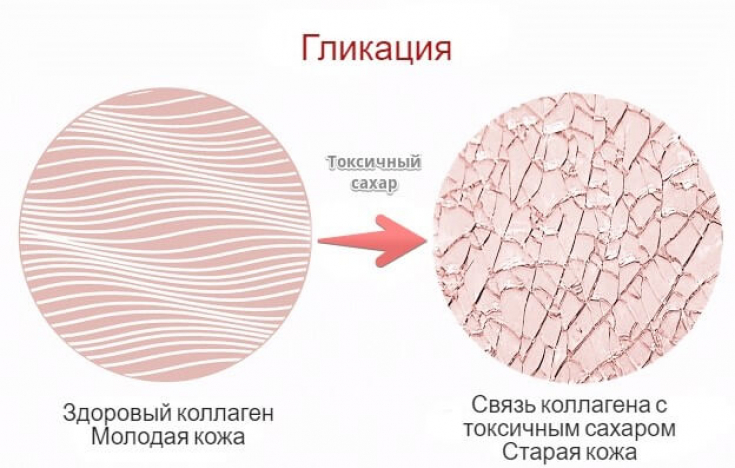How much sugar does a modern person consume?
Practically all the food we buy ready-made is stuffed with sugar.
On the one hand, such an amount of glucose – this is a huge reserve of energy, and on the other hand, an unbearable ballast, which, if not used, settles on the body.
Excess glucose is terrible not only for being overweight, but also for worsening the condition of the body as a whole.
Read on estet-portal.com how excess glucose affects the skin and why diabetic patients usually experience worse skin regeneration.
How excess glucose affects the skin
Glucose is the main source of energy for most mammalian cells, including keratinocytes.
It provides a carbohydrate scaffold for the glycosylation of proteins and lipids that are found in the extracellular matrix of the skin.
Thus, it becomes clear that altered glucose levels in the skin can cause structural changes and abnormalities in the barrier function of the skin.
Excess glucose impairs skin healing and regeneration.
Studies have shown that high glucose levels enhance calcium-induced keratinocyte differentiation and inhibit proliferation in epidermal keratinocytes and dermal fibroblasts, resulting in slower skin renewal and inhibition of collagen and elastin synthesis.
Type 2 diabetes: what lifestyle modification includes
Because a well-balanced process of proliferation and differentiation is one of the critical steps in wound healing, high glucose levels may contribute to impaired wound healing in some diseases, including diabetes.
What changes in the skin occur with diabetes?

Glucose affects keratinocyte morphology
Read the most interesting articles in Telegram!
After incubation of cells with various glucose concentrations, cells incubated at low (2 mmol/L) glucose levels are small and organized, while cells maintained at high (20 mmol/L) glucose concentrations were larger and flattened and lost some of their orientation towards each othergu.
Vicious circle of glucose transport in diabetic patients
It is hypothesized that reduced tissue uptake of glucose, as seen in diabetes, may further exacerbate hyperglycemia.
Because the skin makes up 15% of the total human body weight, reducing the uptake of glucose by skin cells can actually increase blood glucose levels.
In diabetic patients, autoregulation of glucose transport creates a vicious circle: the less glucose enters the cells, the more the extracellular glucose concentration increases, thereby further reducing glucose uptake into the cells.
Therefore, the mechanisms of autoregulation of glucose transport by glucose were studied.
In skin keratinocytes, glucose has been found to inhibit its own transport.
The reduction is achieved by reducing the affinity of glucose transporters for glucose.
What procedures does diabetic skin need, and what will you have to refuse
More useful and interesting information on our channel on YouTube:







Add a comment